By Talisa Feliciano
As part of the Open Educational Resources (OER) bootcamp, I had the pleasure to talk with and participate in a workshop led by Emily Drabinski, co-editor of the acclaimed Library Juice Press publication, Critical Library Instruction: Theories and Methods. This discussion touched on three subjects: what defines critical pedagogy, the connection between critical pedagogy and OER, and strategies for implementing this approach in the classroom.
What is Critical Pedagogy?

Image by Yvette De Chavez
One section of a required course that I teach at Brooklyn College is offered only to Education majors. Each semester I ask the students of this section to define the term pedagogy. More often than not these Education majors and budding elementary and secondary school teachers cannot define pedagogy! Pedagogy is the theory and practice of teaching. Some instructors prefer lecture-heavy classrooms with pre-determined syllabi and little to no student input; others prefer discussion-based classes with flexible syllabi and lots of student input. Whether or not instructors are actively identifying their pedagogical practices, these practices are being enacted and affecting the classroom, which brings me to critical pedagogy.
Critical pedagogy aims to dismantle hierarchies in learning environments, prioritizes accessibility (widest definition possible), and uses learners’ knowledge to understand larger processes rather than the other way around (micro-macro understanding). With Emily Drabinski’s facilitation we came up with this definition and a shortened list of elements of a critical pedagogy:
- Transparency and the metaconversation – Educators must be transparent with learners on the Why versus the What of an assignment. Rather than focus on what a learner must write in a paper, for example, it is important for the educator to imbue the importance of why the learner should be completing the assignment and how completion will contribute to a larger conversation.
- Valuing the student knowledge base & including diverse curriculum/voices – Students are not empty vessels, but often have their subject knowledge on various topics. In learning how to be bearers of their knowledge, they need not be inundated with texts/learning materials that are only authored by heterosexual, middle-class, cisgendered, white men. Curriculum diversity means including authors from various intersecting subject identities, from marginal communities and experiences.
- “Yes, and” approach – I got this from social justice organizing. Rather than teach with a “no, but-” approach which fosters singular answers and feeds into a right/wrong dichotomy, “yes, and” acknowledges multiple perspectives and rewards various ways of thinking allowing for the complexity and contradiction of everyday life to exist and be valid.
- Challenge dominant narratives/subjectivity – See above where I mention diverse curriculum/voices. Also, check out this short list on decolonizing the classroom.
- Historicizing/contextualizing/articulating material conditions – This is so essential when teaching in a place like CUNY. Students at CUNY are often affected by their material conditions as workers, immigrants, people living in hyper-policed neighborhoods, poor and working-class students, English language learners, and first-generation college students.
- Teaching questions, not answers – Learning often occurs in how we can ask questions and when we get our students to ask questions rather than regurgitate answers: we are teaching them to think critically. Then, they can ask their peers questions, inside and outside of the classroom.
Critical pedagogy changes depending on the context. This is probably the most important takeaway. Critical pedagogy should be thought of as an active verb rather than a fixed object or noun.
Connecting CritPed + OER
Instructing with critical pedagogy in mind while making use of open educational resources are deeply connected practices, but they are not synonymous with each other. The openness of OER most often refers to the cost for students in accessing materials. Since OERs often use web resources and technologies, they may contribute to students developing healthy relationships with technology, and simultaneously encouraging them to share their work.
One example is encouraging students to create content via social media rather than expecting them to act solely as consumers of educational content. Practices like this can transform student interactions with technology. A critical pedagogical practice can also encourage the “open” of OER to be more expansive beyond financial considerations. Are resources available in multiple languages? Is the vocabulary accessible? Can it be used with a screen reader? Are there subtitles? Both critical pedagogy and OER encourage flexibility and inclusivity with different learning styles.
What are Some Strategies Instructors Can Implement in the Classroom?
During the 2019 Open Pedagogy Bootcamp, with Emily’s facilitation, each fellow evaluated their classes, many of which were taught from different departments housed at different institutions. Still, collectively, the fellows came up with the following list of methods we use in our classrooms:
- Asking accessible/metacognitive questions
- Looking for answers together
- Assigning evidence-based reflections
- Fostering classrooms where everyone talks/create opportunities for participation
- Ensuring everyone knows each other’s names
- Distributing authority, for example, peer reviews
- Annotating the syllabus
This list is by no means exhaustive of all the strategies that exist but responds to the malleable nature of critical pedagogy. There are a multitude of methods that broaden learning and reduce power differentials in the classroom.
Additionally, I was able to chat with Emily for a couple of minutes after the workshop about the particularities of being an adjunct while also remaining committed to a strategy of liberated pedagogies. When I asked her about institutional or departmental pushback to critical pedagogy, the example of syllabi requirements and learning objectives was brought up. How does the fact of departmental guidelines impact power within classrooms taught by adjuncts? An adjunct does not get compensated for suggesting improvements to syllabi and course requirements. This is just one complication many adjuncts face, and as Emily stated, “How can you change the department when so much of its work is dependent on contingent labor?” The conversation about labor and OER is still developing, but Critical Pedagogy provides some guidance in opening existing models to potential changes.
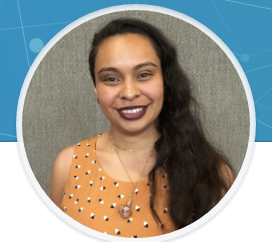 Talisa Feliciano is a doctoral candidate in Cultural Anthropology at the Graduate Center, CUNY. She is currently an adjunct lecturer in the Department of Anthropology and Archaeology at Brooklyn College. She has previously taught at Hunter College and the City College of New York. Her dissertation entitled, “Dancing in the Heart of the Empire: Youth Subway Performers in New York City” explores subway dancers and the politics of public space in New York.
Talisa Feliciano is a doctoral candidate in Cultural Anthropology at the Graduate Center, CUNY. She is currently an adjunct lecturer in the Department of Anthropology and Archaeology at Brooklyn College. She has previously taught at Hunter College and the City College of New York. Her dissertation entitled, “Dancing in the Heart of the Empire: Youth Subway Performers in New York City” explores subway dancers and the politics of public space in New York.
This blog is also posted on the GC Library Blog
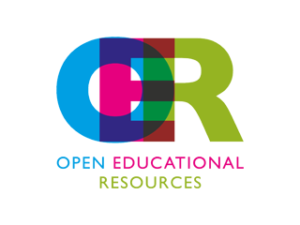 Open pedagogy has been defined in a number of ways. For some, Open Pedagogy begins with
Open pedagogy has been defined in a number of ways. For some, Open Pedagogy begins with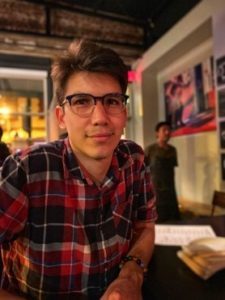 Jacob Aplaca is a third-year PhD student in the English program at the GC and a teaching fellow at Hunter College. His current research focuses on figurations of queer loss and melancholia in 20th and 21st-century literatures. In his spare time, he indulges in writing bad poetry, some of which can be found in PANK Magazine and Yes Poetry, and complains about adjunct life on McSweeney’s Internet Tendency.
Jacob Aplaca is a third-year PhD student in the English program at the GC and a teaching fellow at Hunter College. His current research focuses on figurations of queer loss and melancholia in 20th and 21st-century literatures. In his spare time, he indulges in writing bad poetry, some of which can be found in PANK Magazine and Yes Poetry, and complains about adjunct life on McSweeney’s Internet Tendency.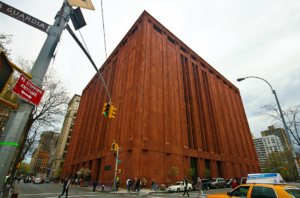
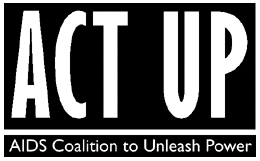
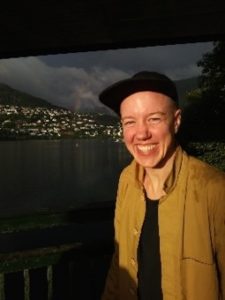 Jaime Shearn Coan is a writer and PhD candidate in English at The Graduate Center, CUNY, and a Digital Publics Fellow at The Center for the Humanities. His critical writing on performance has appeared in publications including TDR: The Drama Review, Critical Correspondence, Drain Magazine, The Brooklyn Rail, Bodies of Evidence, and Women & Performance. He is the co-editor of the 2016 Danspace Project Platform catalogue: Lost and Found: Dance, New York, HIV/AIDS, Then and Now.
Jaime Shearn Coan is a writer and PhD candidate in English at The Graduate Center, CUNY, and a Digital Publics Fellow at The Center for the Humanities. His critical writing on performance has appeared in publications including TDR: The Drama Review, Critical Correspondence, Drain Magazine, The Brooklyn Rail, Bodies of Evidence, and Women & Performance. He is the co-editor of the 2016 Danspace Project Platform catalogue: Lost and Found: Dance, New York, HIV/AIDS, Then and Now.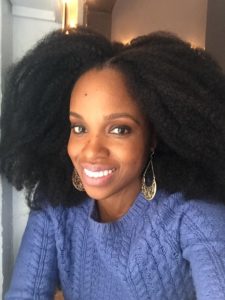 Adashima Oyo is a PhD student in the Social Welfare program at The Graduate Center, CUNY. She earned both a Master of Public Health (MPH) and a Bachelor of Arts in English from Brooklyn College, CUNY. Her research interests explore the impact of the “minority-majority” demographic shift on health disparities. Adashima is also interested in examining the impact of the glaring lack of racial diversity among doctoral students, faculty and executive-level leadership in higher education. In addition to working as the Director of HASTAC Scholars, she is part of the adjunct faculty at New York University (NYU) and Brooklyn College, CUNY where she teaches courses about healthcare and developing research papers to undergraduate students. Adashima is also a Futures Initiative Fellow and Silberman Doctoral Fellow. #BlackScholarsMatter
Adashima Oyo is a PhD student in the Social Welfare program at The Graduate Center, CUNY. She earned both a Master of Public Health (MPH) and a Bachelor of Arts in English from Brooklyn College, CUNY. Her research interests explore the impact of the “minority-majority” demographic shift on health disparities. Adashima is also interested in examining the impact of the glaring lack of racial diversity among doctoral students, faculty and executive-level leadership in higher education. In addition to working as the Director of HASTAC Scholars, she is part of the adjunct faculty at New York University (NYU) and Brooklyn College, CUNY where she teaches courses about healthcare and developing research papers to undergraduate students. Adashima is also a Futures Initiative Fellow and Silberman Doctoral Fellow. #BlackScholarsMatter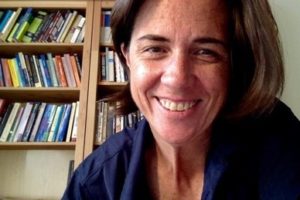 Mary Jean McNamara
Mary Jean McNamara
